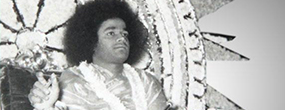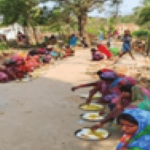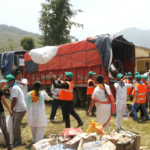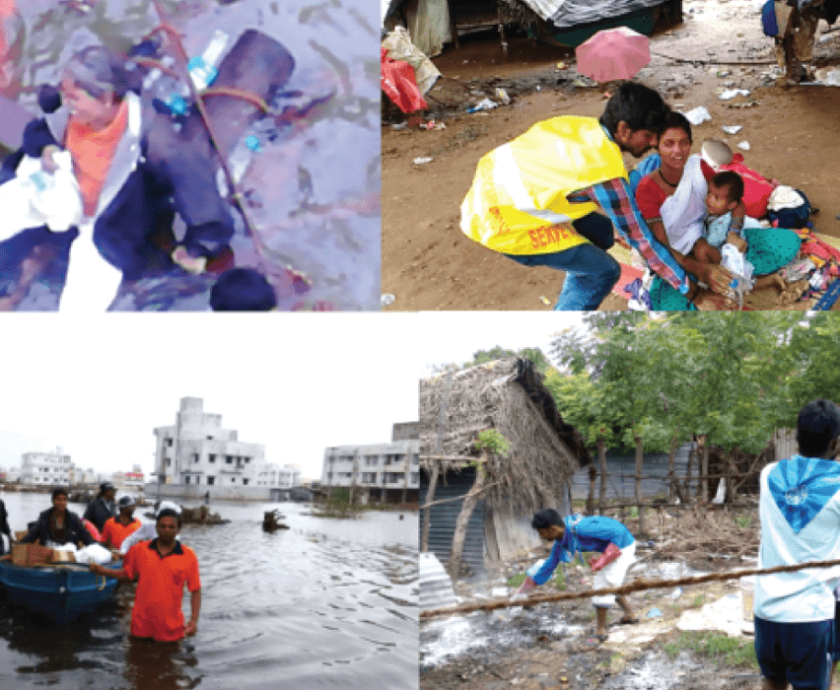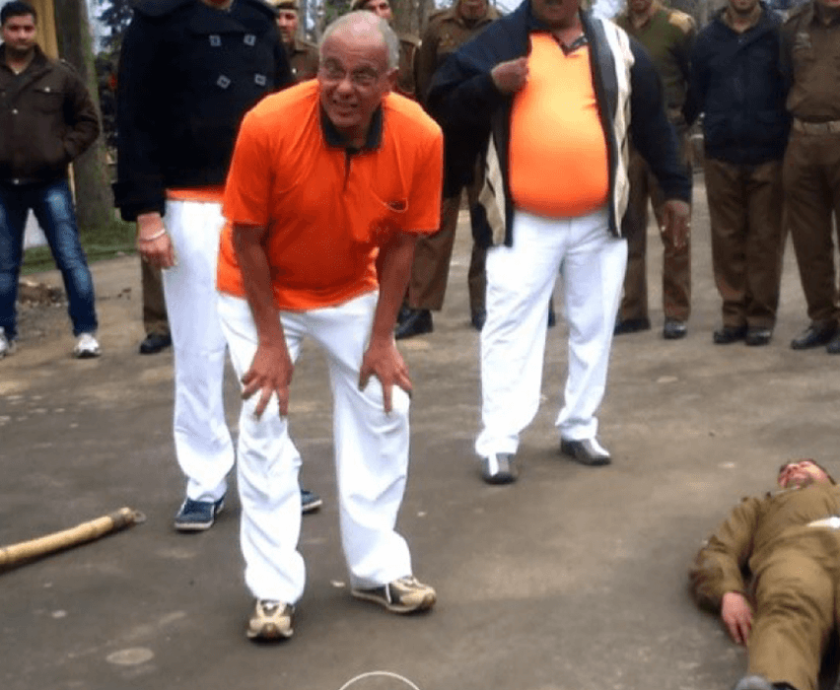SSSSO, Uttar Pradesh and Uttarakhand, responded promptly by setting up relief camps near Dehra Dun Airport, Rishikesh Bus station and Haridwar Railway station. Over 1,500 food packets were air lifted on June 19, 2013 from Jolly Grant Airport to the Kedar Valley. The stranded pilgrims were provided biscuits, bread, cooked food, drinking water, medicines, blankets, and cell phones to enable them to call and reassure their concerned relatives.
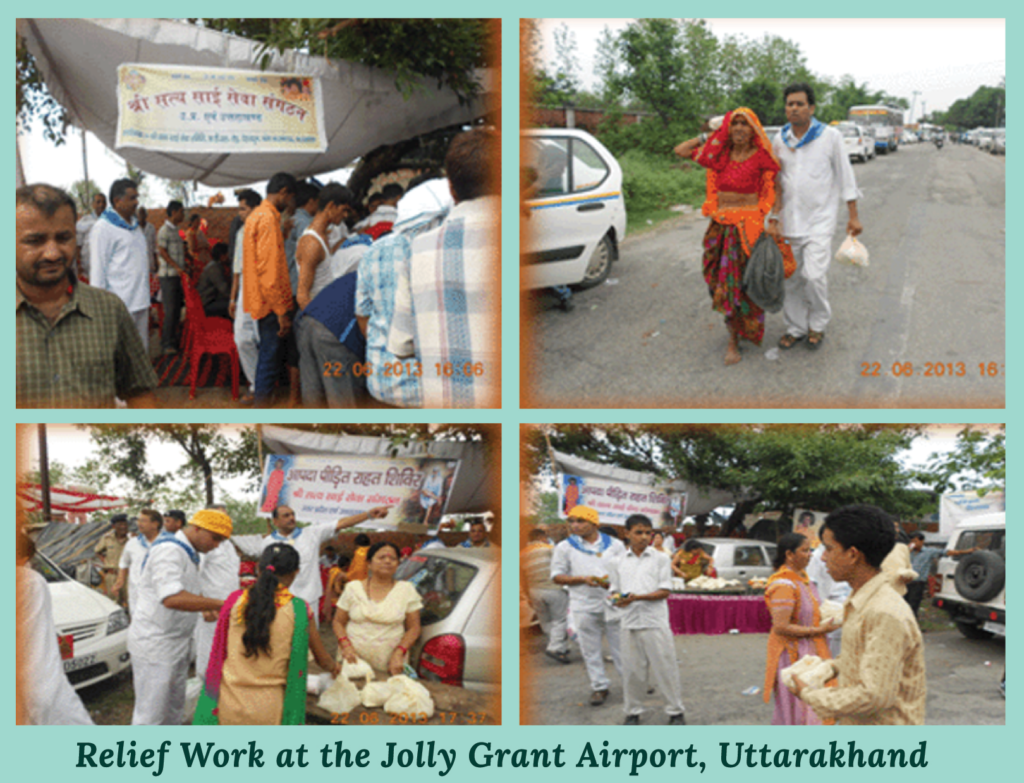
Once the evacuation process was streamlined, SSSSO volunteers focused their attention and efforts to aiding villagers still residing in the affected areas near Chandrapuri (Bhatwari Sunar) which was totally washed off.
Sealed bags containing rice. wheat. sugar. dal. tea. refined oil. biscuits. rusks. candles and match boxes were provided to the villagers. These bags were often transported, individually, by the Seva Dal volunteers on foot as there was no direct access to the villages. In addition, the affected villagers were provided tents, medicines, blankets, clothes, cooking utensils, steel plates and solar lanterns. A hundred families were served in this round of Seva.
In the second round of Seva in the villages surrounding Bhatwari Sunar, 450 food packets. and dry ration kits consisting of wheat flour. rice. dal. cooking oil. sugar. tea. salt were distributed to the households. Twenty-five large tarpaulins were given to aid shelter for those who had lost their dwellings.
The third and fourth rounds of relief activities covered several villages in the Guptkashi area. Residents were given 450 solar lights and food packets. Small food packages were prepared, as Seva Dais had to walk 25-30 kms to reach the distribution point.
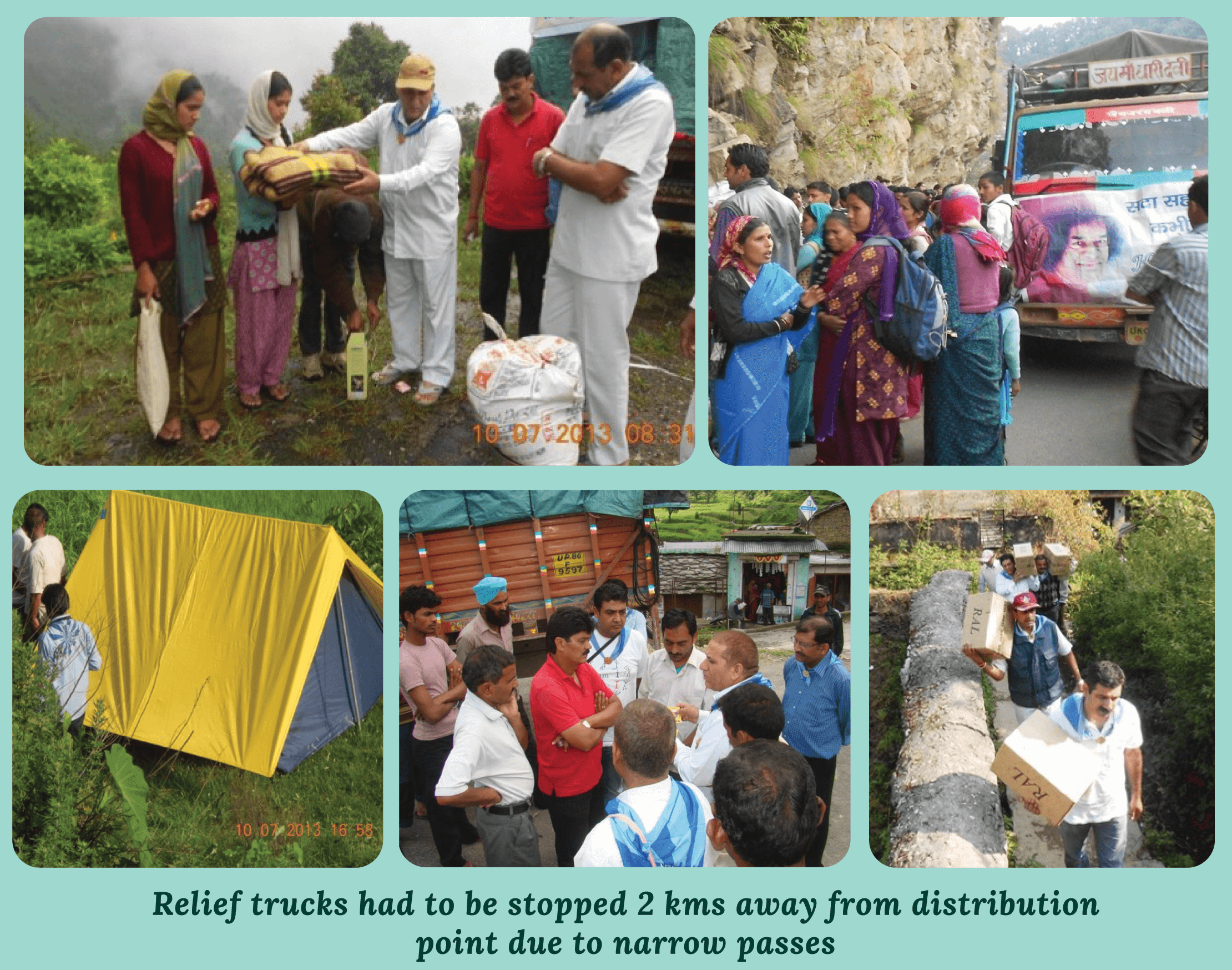
The extent of damage due to the floods, and the upheavals to residents’ lives were such that continuous rehabilitation measures were needed in addition to the immediate relief efforts. Severely damaged schools and houses had to be rebuilt; villagers needed winter clothing and regular supply of food items. The state unit helped several families with marriages of their daughters which had been planned prior to the deluge and flood. Families of the brides were given gift cheques of ~10,000 each, along with clothing, household items, furniture and blankets.
The relief operations demonstrated that Seva Dal volunteers are required to serve at both endsthose in the field rescuing and delivering relief materials to the affected and, those in the background who coordinate, procure, put together and transport the materials to the distribution points. The entire team has to work in a coordinated and dedicated fashion to achieve the goal of serving the distressed to the best extent possible and in a timely manner.
The Uttarakhand flood relief operation also bears testimony to the fact that the Disaster Management Team’s work does not end with providing rescue and relief immediately after the crisis event. Rehabilitation measures to restore the lives and livelihoods of the affected continues to be an ongoing activity well beyond the event.



